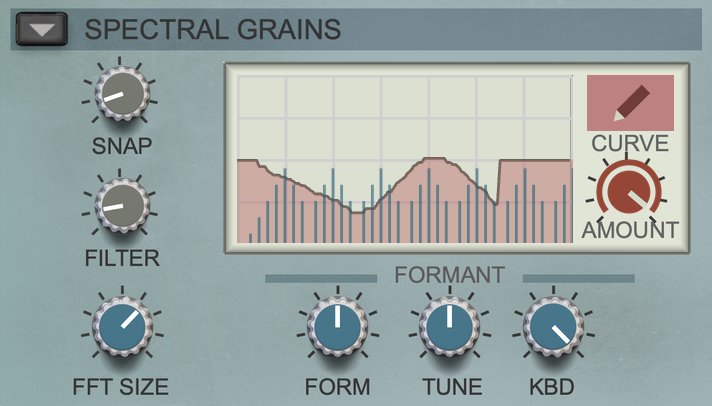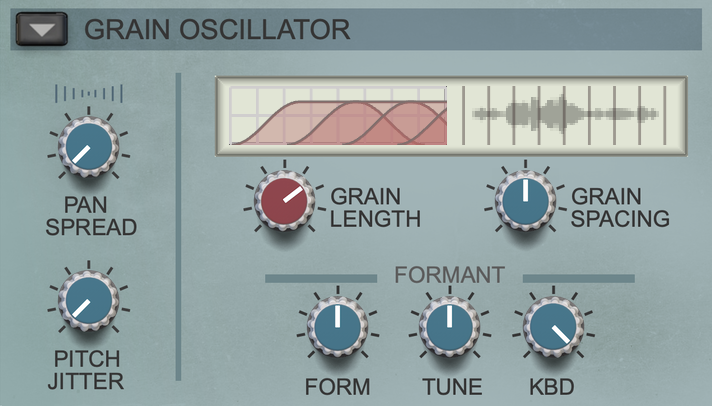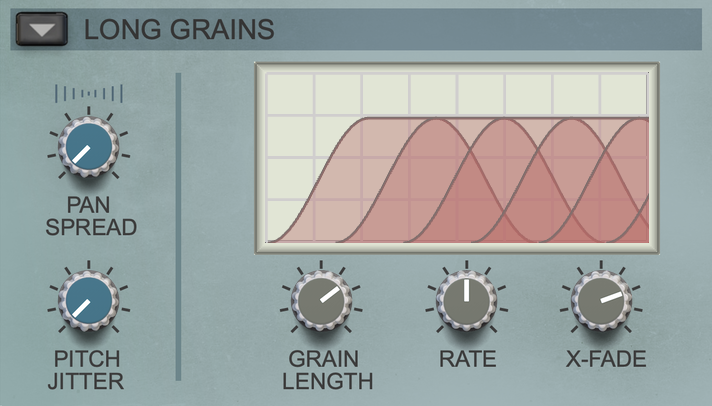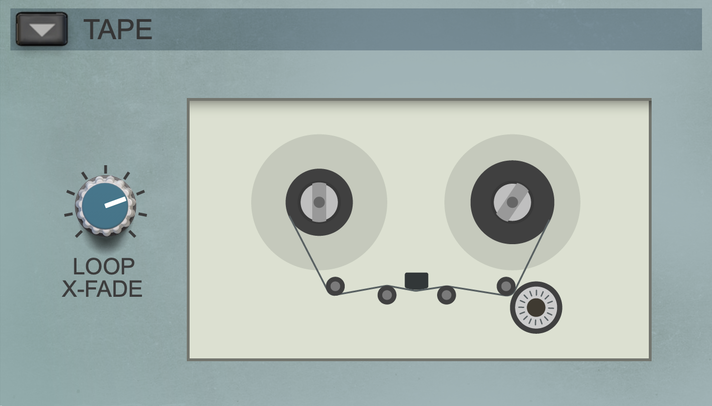Reason’s GRAIN Review
Reason’s Grain “sample manipulator” instrument is, as the name suggests, a granular synthesizer. Reason devices should be considered in their context, they are often missing some features on their own, but when surrounded by other devices in the rack system, they connect to form more complex tools than in isolation. Grain has the basic connection, gate, cv for the sequencer, and 4 cv ins/ outs for external modulation. Grain lets you load a single sample, and manipulate it with one of four grain modes. This is fed into a basic filter and effects section. For modulation you get 3 LFOs, and 4 MSEGs, something I greatly appreciate from Grain and Europa, but sadly miss when it comes to other reason instruments.
Spectral Grains: This is why I’m reviewing this synth, anything spectral gets me interested, especially in the context of granular synthesis. The spectral mode contains a drawable filter curve that lets you sculpt the tone in interesting ways. Under this is a formant section, for shifting the formants up and down, which produces pretty wild tonal shifts. To the left of these is the spectral controls, “snap”seems to pull all the bands together to produce more of a squarish wave sound, almost like a comb filter quality. and “filter” removes bands in an interesting way for a sparser quality, but evenly across the spectrum, not like a lowpass. The FFT Size control has 4 settings, each one changes the quality of the engine quite a bit, with the leftmost position sounding faster and grittier but with less detail, and the rightmost position having the most harmonic content, but smears and blurs the audio quite a bit.
*I couldn’t find any documentation as to what these sizes actually are, they sound to me like they could be 128, 256, 512, and 1024, but I’m no expert.
Grain Oscillator: This mode is closer to a buffer style looper, and also has the formant section from spectral mode. Results are a bit harsher and digital sounding, good for basses and leads or glitchy sound design. The grain spacing control is cool, as it spreads each looped region across the sample pulling different qualities from various regions simultaneously.
Long Grains: Long Grains is what you’d normally consider a granular synth, it plays back multiple grains that overlap. You get controls for grain shape, rate, and length. It’s a pretty slow granular engine with a low total grain count, it’s nice to have within the reason environment, but alone wouldn’t be enough to write about.
Tape: Probably the most boring of the bunch, simply changes pitch alongside playback speed as a tape or vinyl would. There’s a loop crossover to reduce clicking, and that’s it. It is interesting with jitter, as the pitch warbles as the playhead jumps around
Simply having a granular option in any given environment is rad, so Grain is appreciated, MSEGs are also always a nice addition. There’s also a few different playback modes, like pingpong or having the playhead follow an MSEG. It’s always fun to drag your cursor around the sample window in these sorts of tools, and Reason have thought about that, in the mod matrix you’ll find sources for display Y position, and mouse gate, which detects if you’re clicking or not. This can be a fun way to turn the waveform display into a performance tool. They’ve also included a sample pitch curve modulator, it’s pretty smoothed out, so it’s best used to stabilize vocals or drift. I do feel like Grain could use a bit more, perhaps a granular/spectral processing section instead of a filter, or even a couple more modes would be appreciated. That said, the spectral engine is a lot of fun and capable of many unique tones, I’ll likely pull this one out more often just for this one feature. Again, it’s important to remember this is one tool in the Reason ecosystem, and alone it adds quite a lot to that system.





